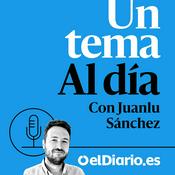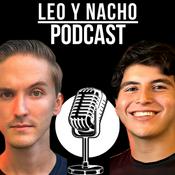313 episodios

John Kunco
22/12/2025 | 40 min
#312 - In 1991, John Kunco was convicted in Pennsylvania of raping and torturing a 55-year-old woman inside her apartment. There was no DNA evidence tying him to the crime. Instead, the case against him relied heavily on an alleged bite mark and a delayed voice identification. Kunco spent nearly 28 years in prison before advances in forensic science began to unravel the evidence used to convict him. DNA testing excluded him from key physical evidence, and the forensic dentists who testified at his trial later withdrew their conclusions, acknowledging that bite mark analysis is not a reliable forensic method. In 2018, Kunco’s conviction was vacated — but the case did not end there. Subsequent legal developments, including guilty pleas to reduced charges, complicated public understanding of whether Kunco was wrongfully convicted, raising difficult questions about how forensic failure, legal strategy, and justice intersect. Forensic Tales is a Rockefeller Audio production. The show is written and produced by Courtney Fretwell. To listen to new episode early & ad-free, please consider joining the show's Patreon at patreon.com/forensictales Support the show for as little as $3/month. Learn more about your ad choices. Visit megaphone.fm/adchoices

Arpana Jinaga
15/12/2025 | 45 min
#311 - In November 2008, 24-year-old Arpana Jinaga was found murdered in her Redmond, Washington apartment—just hours after attending a Halloween party with neighbors in her building. Arpana was a bright, accomplished software engineer with no known enemies, yet the crime scene was chaotic and filled with conflicting forensic clues. Despite multiple suspects, extensive DNA testing, and even a criminal trial, her killer has never been identified. Learn more about your ad choices. Visit megaphone.fm/adchoices

Juliana Redding
08/12/2025 | 43 min
In March 2008, 21-year-old Juliana Redding was found murdered inside her Santa Monica apartment. Juliana had moved to Los Angeles to study communications and pursue modeling, building a life close to the beach and staying closely connected to her family in Arizona. When she stopped responding to calls and messages, police conducted a welfare check and discovered signs of a violent struggle — along with attempts to start a fire inside the home. Investigators collected a significant amount of forensic evidence, but the case would take an unexpected turn in court. This episode examines Juliana’s life, the investigation into her death, and the questions that remain today. Despite the volume of forensic evidence, no one has ever been convicted of her murder. A stark reminder that even strong forensics don’t always lead to a clear resolution. For a complete list of sources, visit ForensicTales.com. To support the show and access early, ad-free episodes, join us on Patreon. https://www.patreon.com/forensictales Forensic Tales is written and produced by Courtney Fretwell. A Rockefeller Audio Production. Learn more about your ad choices. Visit megaphone.fm/adchoices

Robert Stonebreaker
01/12/2025 | 40 min
A respected veterinarian is found dead under mysterious circumstances in an upscale Rancho Santa Fe neighborhood. What first looked like a car accident quickly turned into a homicide investigation filled with unanswered questions — a wrecked vehicle, blunt-force trauma, and no clear explanation of how Dr. Robert Stonebreaker ended up in a nearby driveway. Nearly 15 years later, the case remains unsolved. In this episode, we break down the timeline, the forensic inconsistencies, and the theories that still surround his death. Learn more about your ad choices. Visit megaphone.fm/adchoices

Jane Mixer
24/11/2025 | 40 min
In this episode, we revisit the shocking murder of 23-year-old law student Jane Mixer, long believed to be a victim of Michigan’s “Co-Ed Killer.” When modern DNA testing finally pointed to an unexpected suspect, Gary Leiterman, the case was reopened, re-examined, and fiercely debated. Was the forensic evidence clear-cut? Or did lab contamination muddy the truth? Learn more about your ad choices. Visit megaphone.fm/adchoices
Más podcasts de Noticias
Podcasts a la moda de Noticias
Acerca de Forensic Tales
Escucha Forensic Tales, René Franco presenta La Taquilla y muchos más podcasts de todo el mundo con la aplicación de radio.net

Descarga la app gratuita: radio.net
- Añadir radios y podcasts a favoritos
- Transmisión por Wi-Fi y Bluetooth
- Carplay & Android Auto compatible
- Muchas otras funciones de la app
Descarga la app gratuita: radio.net
- Añadir radios y podcasts a favoritos
- Transmisión por Wi-Fi y Bluetooth
- Carplay & Android Auto compatible
- Muchas otras funciones de la app


Forensic Tales
Descarga la app,
Escucha.




































